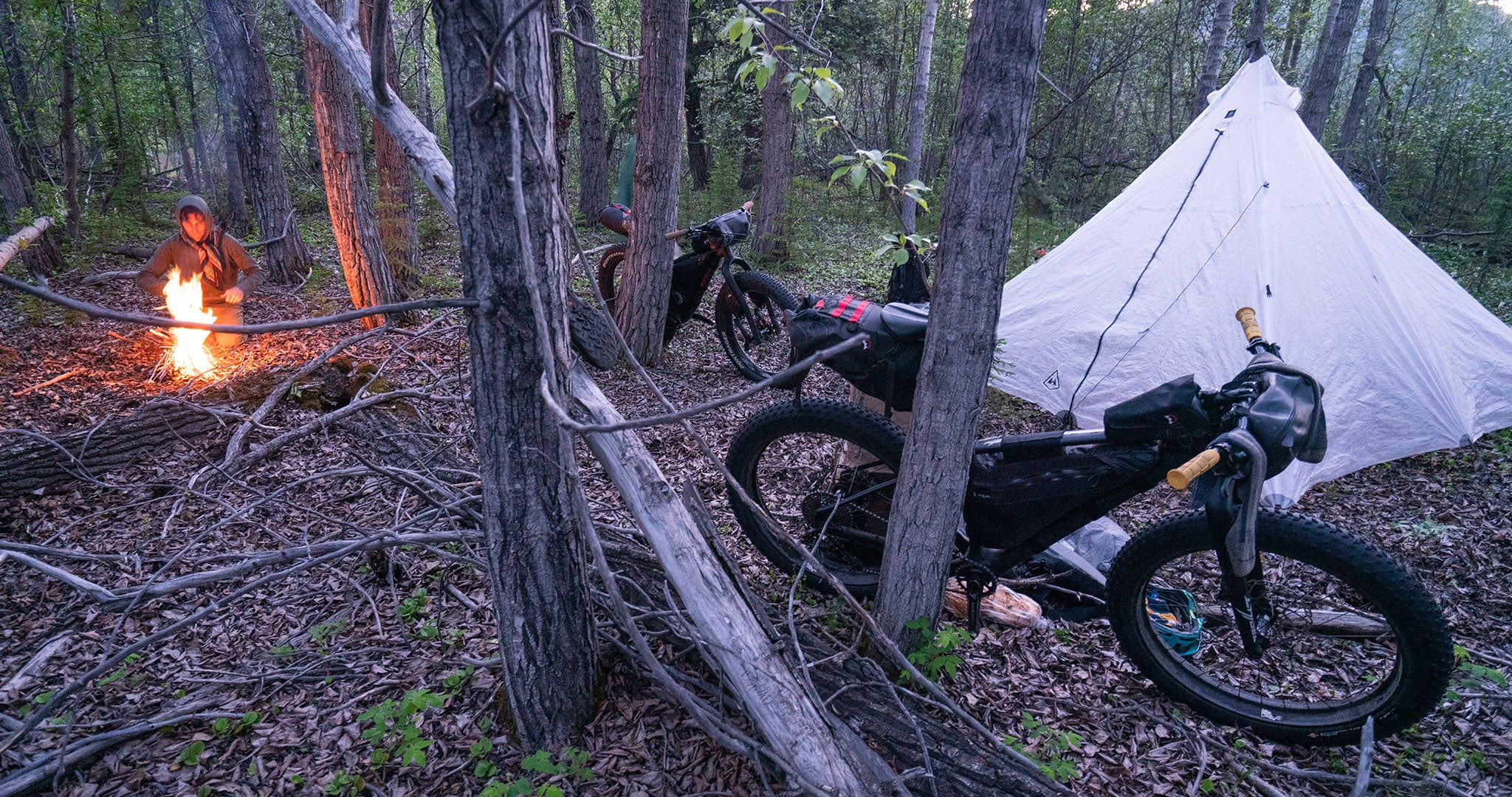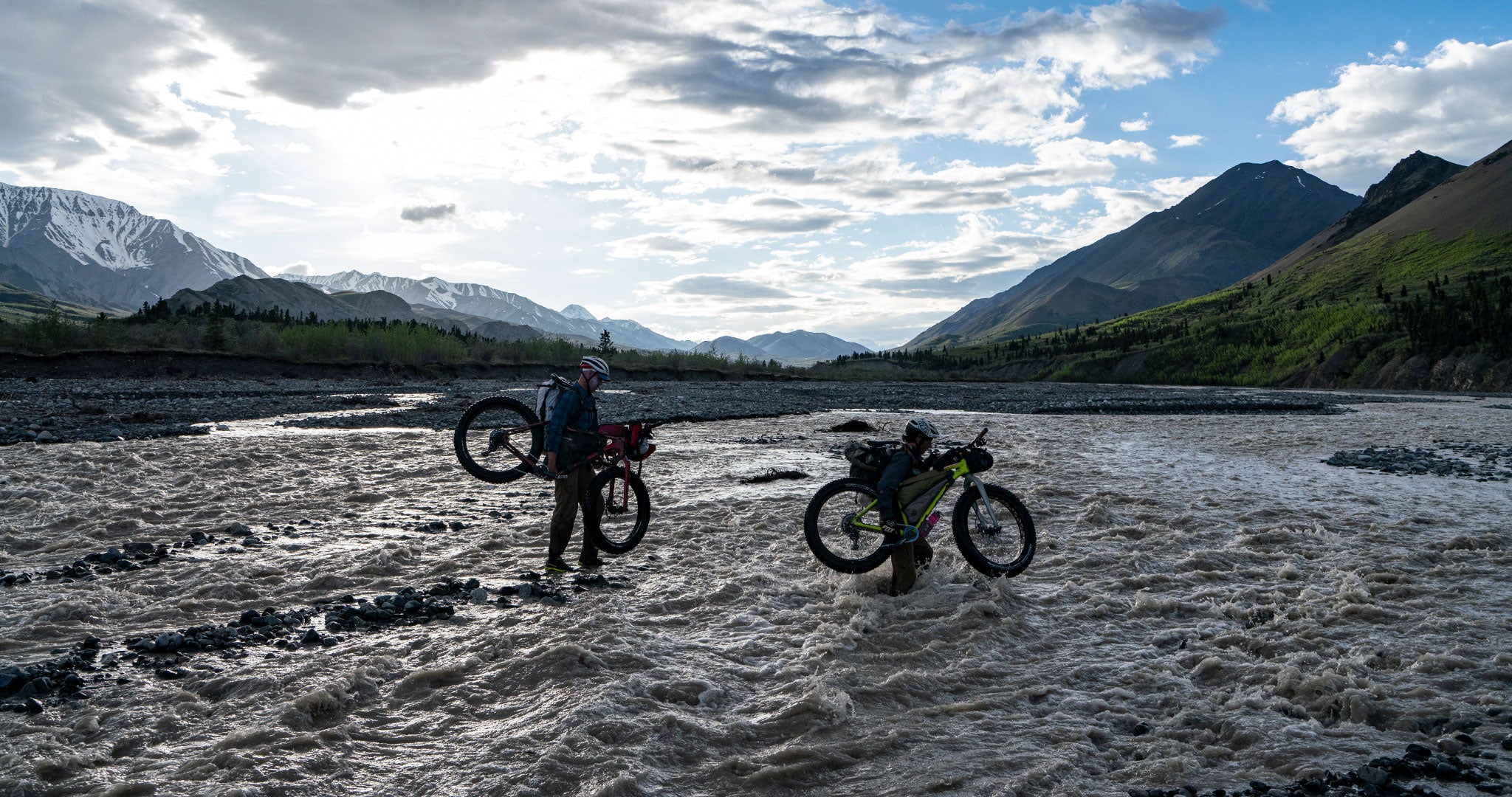Wet Alders and Still Frozen Toes
Words & Photos by Steve “Doom” Fassbinder
This pack and I have shared and collectively created far too many tales to tell in just one sitting.
From Pakistan to the desert Southwest, Tajikistan to Alaska, we’ve been through it. Trust me when I say, if this pack could talk – it would certainly have more than a few bad things to say about me. But since I’m the human with a voice and opposable thumbs, I’ll take the floor and recap a particularly memorable tour.
For me, nothing conjures up memories of cold feet and endless wilderness exploration like a conversation about our 49th state. I’ll admit these generally take place with hardened Alaskan veterans, while either preparing for, embarking on, or debriefing from trips to “The Last Frontier.”
These conversations tend to be a bit rowdy and filled with characters that a writer of my ability could only dream of creating. Stories of harrowing rescues, bad mistakes, forced bivies, tents catching fire – the latter could be the result and cause of the former. I’ve been spared the worst of these mishaps, but a trip from Nebezna to McCarthy with some friends last summer had its moments.

Day 1
Stoke was high as we took our first pedal strokes down an ever-deteriorating ATV track, but as if to just set the tone early, we were soon pushing our bikes for hours through dense brushy swamplands. This was shaping up to a classic Alaskan “Hell Biking” mission. By midnight we had had enough and bivied not far from our first “real” obstacle, the braided Nabesna River.
Day 2
On the advice from one of the above-mentioned storytellers, we decided to save considerable weight, and just take one packraft and paddle to negotiate the many large river crossings that we would encounter over the next week. He had done this successfully 30 years prior, and we aimed to do the same. In theory, this would work just fine, but in reality, there were four of us, and no matter how efficient we became at ferrying our bikes and bodies across these cold rivers, it was just a very slow process. At best we could complete a crossing in one hour, but the more complicated crossings would take up to two hours.

Day 3
Working our way up the flooding Cooper River required more arduous boat ferries and dozens of sketchy crossings by foot. During one of these crossings, Jon was swept off his feet and got pounded by the rocky river bed. I was able to quickly save his bike from floating away, and Jon recovered, but he was seriously shaken and bloodied. After topping out at the stunning Cooper Pass, we quickly descended toward Notch Creek drainage dwarfed by the massive glaciated peaks and valleys surrounding us. The feeling of being insignificantly small and vulnerable in a place like this is palpable. We spooked a small herd of magnificent Dall Sheep, and they quickly made for the safety of a steep scree slope a thousand feet above us. A task they completed in mere minutes would have taken us several hours. Fortunately, our fate at the moment was following the Notch Creek down towards the Chisana, and we were having great riding conditions punctuated by dozens of ridable and un-ridable river crossings.
Day 4
After several hours navigating a complicated multitiered crossing of the Chisana, we were once again, warming up and pushing bikes across a swampy marsh trail toward our next climb out the Geohenda Creek and heading to an eventually warm bivy in the fabled Solo Mountain cabin. If the massive vistas of the past few days hadn’t humbled and awed, this section certainly elicited waves of wilderness euphoria unmatched in my Alaskan playbook. Perfect ribbons of wild single track laid out amid bears and hunting foxes were framed by the distant topography of Mount Sulzer Riggs and Natazhat. Our progress here was slowed only by gaping mouths and Kodak moment bliss.
Day 5
In true Solo Mountain cabin form, we woke to the sound of rain on the roof and somberly packed amid the deteriorating weather. The morning consisted of pushing thru wet alders, pushing thru wet alders, and pushing thru wet alders. We arrived at the White River and detoured down river to find a described “better” crossing of this nasty cold and sketchy river. Unfortunately, Jon took a slightly different line and was again swept off his feet and pummeled by the force of the river. After a dramatic self-rescue, he arrived on our side soaked to the core and bloodied. Without much choice, we kept moving to stay warm and made camp a few hours later at the base of Skoli Pass.
Day 6
It should be mentioned that we knew we’d be running a bit past our intended finish and were already rationing food at this point. Skoli Pass loomed ahead, and the weather looked bad at best. Two passes comprise the notorious “goat path” to Chitistone Falls and the only way out to McCarthy from the Russel Glacier. On the first part, we followed a lone set of bear tracks across foggy fields of old winter snowpack and postholed along as the bear did.
There’s really only one right way through this labyrinth, and without a trail to follow, we stuck to the bear’s tracks and were eventually delivered back onto the trail and the other side of this first pass. We made a miserable camp in the pouring rain and my flat sleeping pad from a puncture the night before was irreparable.
Day 7
Mike woke us with a warning to knock the snow off our UltraMid, and soon after we were again jolted awake to the sound of our center pole (paddle) fracturing under the load of a foot of heavy wet snow that had blanketed us overnight. This was not the kind of blanket we were dreaming of. The crux of the goat trail lay ahead, and with a foot of snow and constant wet slides rumbling down the mountains, we had no choice but to bivy over and hope for a melting cycle and better weather. We never broke camp or ventured more than 100 feet from our little sanctuary in the snow.
Day 8
Packed and hungry, we set off toward the final crux of the Goat Trail. Steep mud and snow slide terrain was the order of the day. A fall here would mean the end of the trip or worse, and we took several hours of tenuous time to negotiate this section. The weather held steady, and by early afternoon we were on the flood plain of the Chitistone River and our clear exit out toward McCarthy.
Day 9
We were now following the big braided glacial rivers of the Chitistone and Nizina Rivers. This was good news, but with our single boat, each crossing of these massive drainages could take three or four trips back and forth to complete. What should have taken a better part of a short day, turned into a late night rocky bivy between braids in this maze of channels. We shared the last of our meager rations this night and mostly went to bed wet and hungry.
Day 10
An early start to the day began with finding the most efficient way across the remaining channels of the Nizina, and our already cold and tortured feet were submerged for hours as we plodded around looking for the best crossings. The final miles into McCarthy are on a decent but muddy wet road that we were incredibly thankful for. Pulling into town, it seemed strange to have finally made it back to civilization. We collapsed at the local watering hole/ lunch spot around noon. Order of business was as follows. Take off shoes (feet have been completely numb for days), throw shoes way, drink two beers, eat so much food, drive eight hours to Anchorage, pack bikes in boxes, eat more food, drink more beer, get dropped off at the airport at midnight, take red-eye home, arrive in Durango, still can’t feel feet, stumble out of plane, get baggage, drive home, colipase, feet still numb.
Day 20
Some toes still numb.
Day 30
Toes pretty much normal again…….